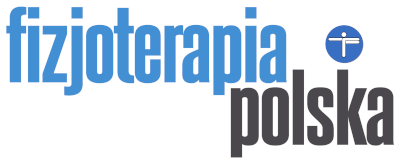Paulina Magdalena Ostrowska, Rita Hansdorfer-Korzon, Rafał Studnicki, Dawid Spychała
Paulina Magdalena Ostrowska, Rita Hansdorfer-Korzon, Rafał Studnicki, Dawid Spychała – Use of the posturography platform as a tool for quantitative assessment of imbalance and postural control in post-stroke patients in chronic phase. Fizjoterapia Polska 2023; 23(1); 142-163
DOI: https://doi.org/10.56984/8ZG07B4A3
Abstract
Background. Imbalance during standing, which is usually observed as an asymmetry in the weight shifting toward to the unaffected side of the body, is one of the most common factors affecting the independence and quality of life of post-stroke patients. Clinical assessment of imbalance in post-stroke patients is often conducted by visual observation using standardised tools (balance tests). However, quantitative analysis, using a posturographic platform, is more accurate and provides more information about the patient’s functional status. The TYMO® device, used in this study, is a portable posturography platform that measures tilts of the body’s center of mass and reports the results of the rehabilitation process. It enables an objective, direct and quantitative assessment of the patient’s functional status. Such an assessment can contribute to significant effectiveness of physiotherapy and consequently improve the patient’s quality of life and shorten the period of abstinence from work. Objective. Quantitative assessment of imbalance and postural control using a posturography platform (TYMO®) in patients after ischaemic stroke, in the chronic phase, as an important component of the functional diagnosis process and rehabilitation programme design. To emphasise the role of the posturography platform (TYMO®) as a tool for measuring static balance – symmetry of body weight distribution, and a tool for monitoring and reporting the results of physiotherapy treatment. Methods. In the current study, before and after two weeks of rehabilitation, quantitative measurements of balance on the TYMO® platform were made in a group of subjects (n = 60: adults, after ischemic stroke – first stroke episode, in chronic phase – up to 5 years after the stroke incident occurred) undergoing therapy using neurophysiological methods (PNF – Proprioceptive Neuromuscular Facilitation and NDT-Bobath – Neurodevelopmental Treatment according to the Bobath concept) and the SPIDER system (Strengthening Program for Intensive Developmental Exercises and activities for Reaching health capability). Measurements included: the distance marked by the patient’s center of mass while performing the test, the medial-lateral and anterior-posterior tilts of the subject’s body, the area of movement marked by the body’s center of mass, the average speed at which the patient performed the movement to maintain the required position, and the distribution of the subject’s weight. Based on the posturographic results obtained before therapy, it was possible to design a targeted rehabilitation programme. The magnitude of the difference in measurements before and after rehabilitation made it possible to assess the impact of the therapy on the patient’s balance. In addition, it was a specific indicator of the accuracy of the selection of physiotherapeutic treatment (a large difference in the mean results before and after therapy reflected an improvement in the parameters of postural control, hence the effectiveness of the therapy) and determined the direction of the future rehabilitation programme. Results and conclusions. The parameters measured by the TYMO® platform are crucial in assessing the functional status of post-stroke patients, especially with regard to postural control or balance disorders. The results described confirm the validity of using quantitative assessment, using the posturography platform, as an important component of the functional diagnostic process and designing an rehabilitation programme. The TYMO® platform itself is a useful tool for measuring, monitoring and reporting the effects of physiotherapeutic treatment in post-stroke patients.
Key words:
stroke, body weight distribution, balance, quantitative assessment, posturographic platform

